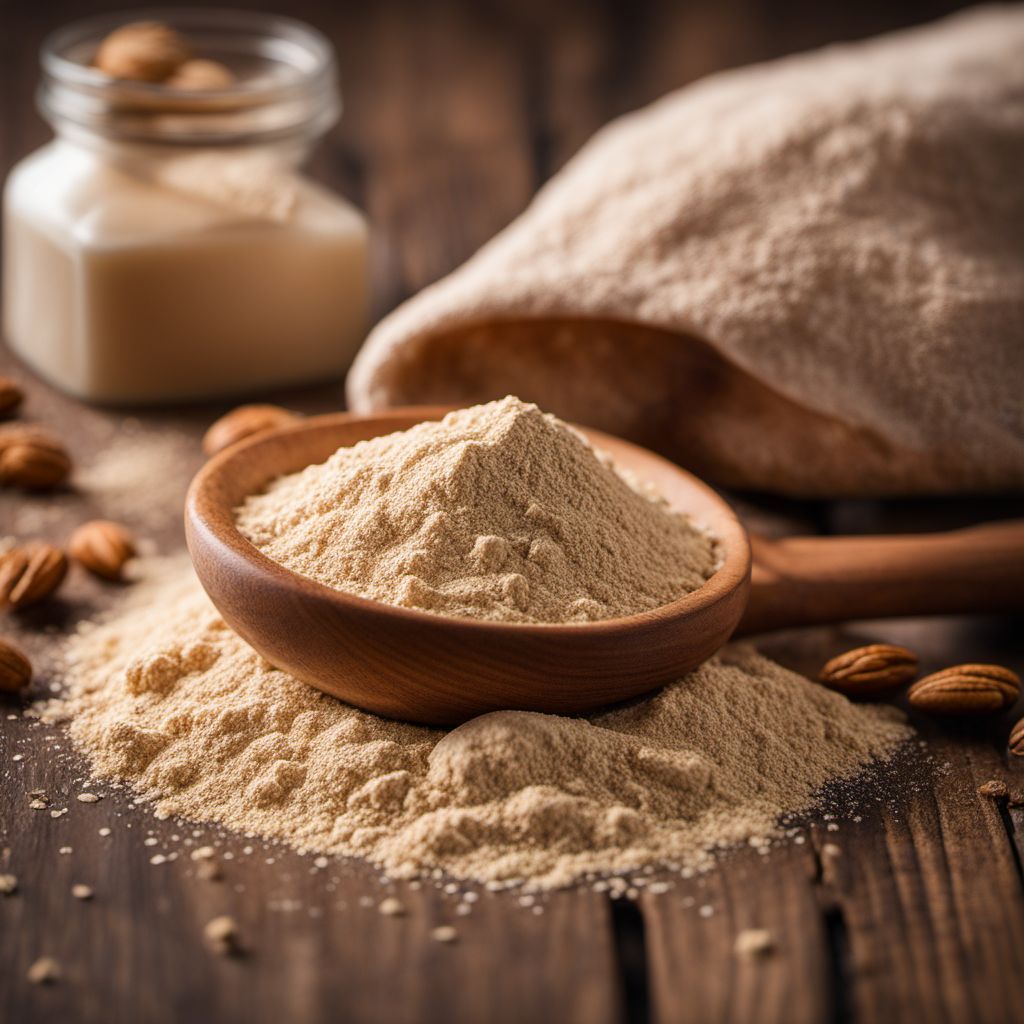
Ingredient
Rye flour, gluten free
The Wholesome Gluten-Free Alternative: Exploring Rye Flour
Rye flour, gluten free, is a finely ground powder made from the whole grain of rye. It has a slightly darker color compared to traditional rye flour and a coarser texture. This flour is known for its earthy and nutty flavor, which adds depth to baked goods. It also provides a denser texture, making it ideal for creating hearty breads, muffins, and pancakes. Rye flour, gluten free, is rich in fiber, vitamins, and minerals, making it a nutritious choice for those following a gluten-free diet.
Origins and history
Rye has been cultivated for centuries in Northern and Eastern Europe, where it has played a significant role in traditional cuisines. It was a staple grain in regions with colder climates, as rye is more tolerant to harsh growing conditions compared to other grains. Rye flour gained popularity in the Middle Ages and was widely used for baking bread. Today, rye flour is enjoyed worldwide, with gluten-free varieties catering to the needs of individuals with gluten sensitivities.
Nutritional information
Rye flour, gluten free, is a nutrient-dense ingredient, providing a good source of fiber, iron, magnesium, and B vitamins. It is also lower in calories compared to wheat flour, making it a healthier choice for those watching their calorie intake.
Allergens
Rye flour, gluten free, does not contain gluten, making it suitable for individuals with gluten sensitivities or celiac disease. However, it is important to ensure that the flour is certified gluten-free to avoid cross-contamination.
How to select
When selecting rye flour, gluten free, look for a reputable brand that clearly states it is certified gluten-free. Check the packaging for any signs of damage or moisture, as this can affect the quality of the flour. Additionally, opt for organic rye flour to ensure it is free from pesticides and other harmful chemicals.
Storage recommendations
To maintain the freshness and quality of rye flour, gluten free, store it in an airtight container in a cool, dry place, away from direct sunlight. It is best to use the flour within six months to ensure optimal flavor and texture.
How to produce
Rye flour, gluten free, can be produced by grinding whole grain rye berries into a fine powder using a grain mill or a high-powered blender. However, for optimal results and to ensure it is truly gluten-free, it is recommended to purchase certified gluten-free rye flour from trusted sources.
Preparation tips
When using rye flour, gluten free, in baking, it is important to note that it has less gluten-like properties compared to wheat flour. Therefore, it is often combined with other gluten-free flours or binders, such as xanthan gum or psyllium husk, to improve the texture and rise of baked goods. Rye flour can be used to make delicious bread, pancakes, muffins, and even pasta. Experiment with different recipes and ratios to find the perfect balance of flavors and textures.
Culinary uses
Rye flour, gluten free, is commonly used in baking bread, muffins, pancakes, and other baked goods. It adds a distinct flavor and texture to these creations, making them heartier and more flavorful. It can also be used as a thickening agent in soups and stews, or as a coating for meats and vegetables.
Availability
Rye flour, gluten free, is commonly available in health food stores, specialty grocery stores, and online retailers that cater to gluten-free products. It may be more readily available in regions with a higher demand for gluten-free alternatives.


